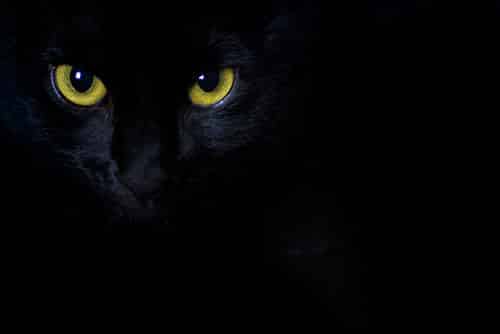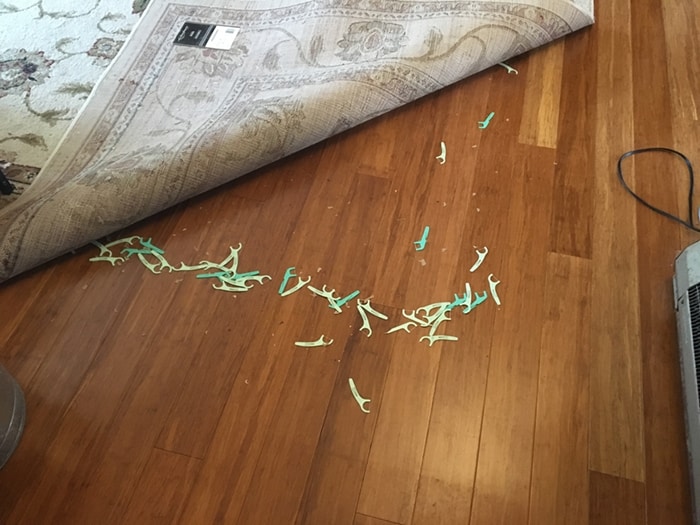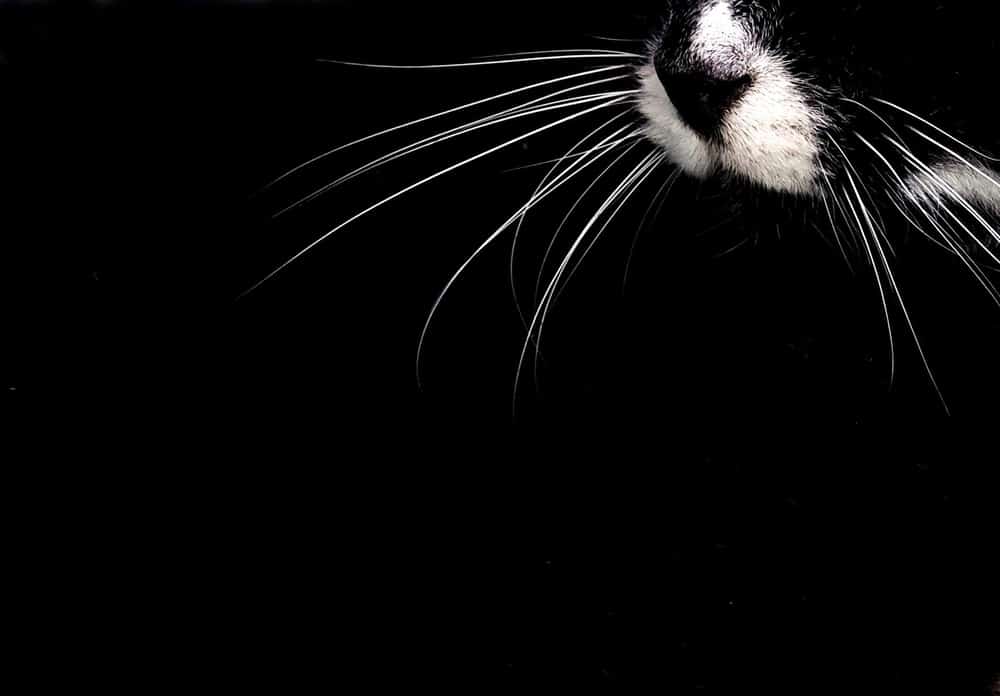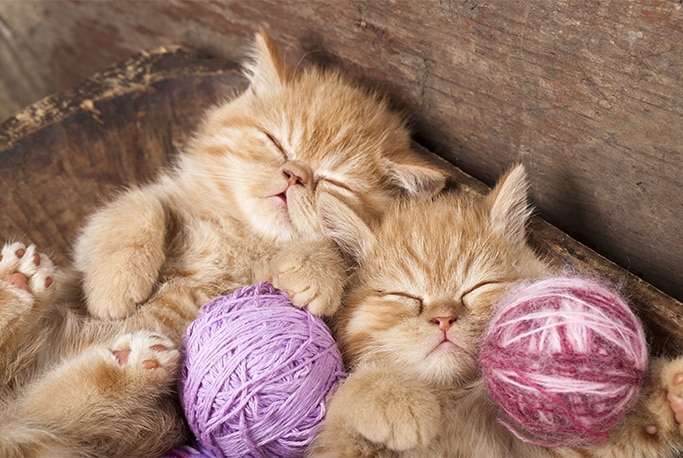The physiology of the cat is very like that of other mammals, but its sense organs have evolved specialized modifications as a hunter. One of the most remarkable adaptations seen in cats is in the anatomy and function of its eyes. So, can cats see in the dark?
While the idea that cats can see in the dark isn’t true, they can see with very little light.
Cats’ Eyes Have a Larger Cornea, Pupil, and Lens
Unlike humans, cats’ eyes have evolved to harness all the light available. In proportion to its brain, a cat’s retina is the same size as a human’s. But the cornea, pupil and lens are larger. This means the cat can take in more light. A cat’s cornea and lens lie close to the retina. Their extreme curvature enables the cat to focus more light, and a rounder eyeball increases the angle of vision.
A Cat’s Eye Has a Specialized Reflective Structure
The cat also enjoys a specialized reflective structure which humans lack. Called the tapedum lucidum, it sits behind the retina and comprises 15 layers of reflective cells. These layers act as mirrors concentrating the available light. When cats’ eyes appear to glow green in the dark, it’s because the light shining on them reflects from the tapedum lucidum through the wide-open pupils.
A Cat’s Lens Provides Excellent Focus
Cats’ eyes work in a similar way to a camera. Light enters through the pupil. The pupil is a hole in the iris which, like the aperture on a camera, can enlarge or contract to control the amount of incoming light. A Jell-O-like lens focuses the incoming light onto the retina. The lens in a camera provides focus by moving forward and back. In mammals, the soft, Jell-O-like lens focuses as it’s squashed or stretched by adjacent muscles. The cat’s lens gives excellent focus equaled only by the human eye.
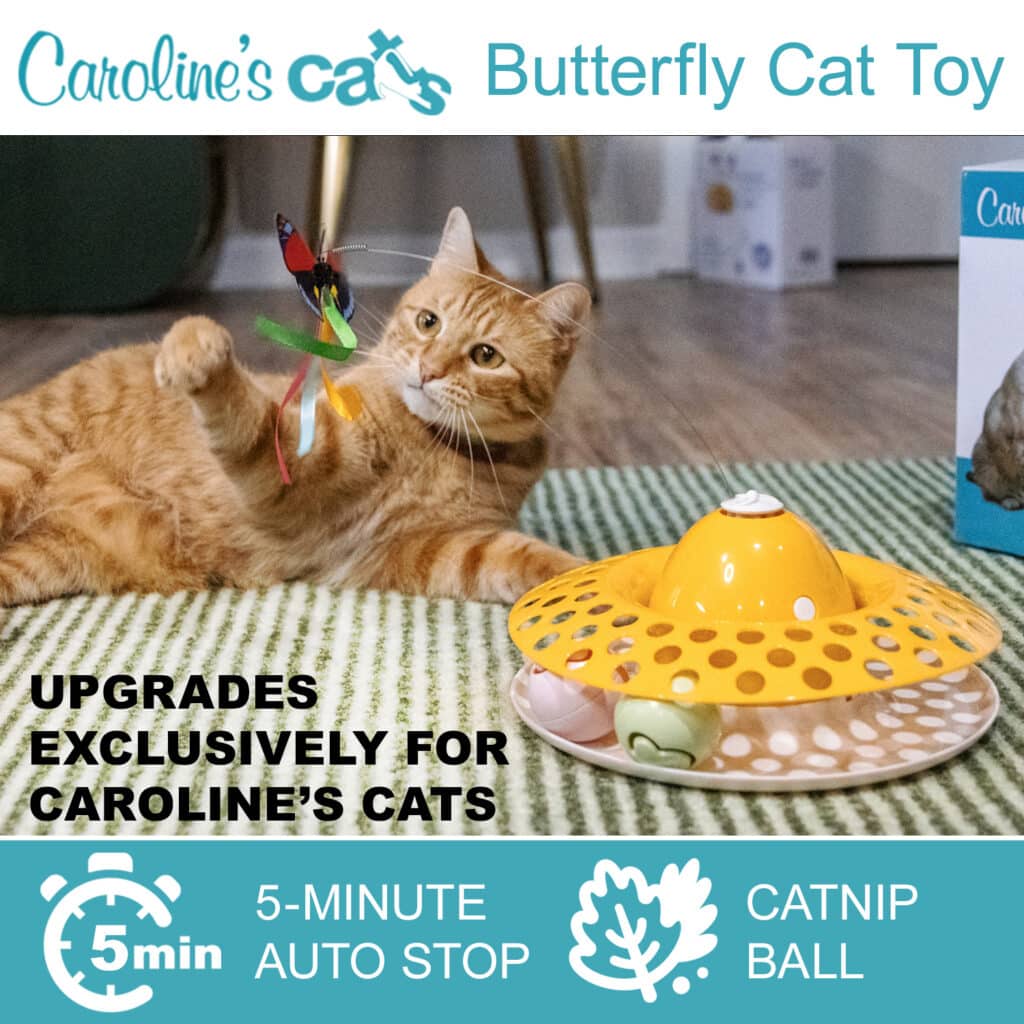
Cats’ Eyes Have More Light-Sensitive Rods
The retina has two kinds of cells known as rods and cones. Rod cells are light-sensitive and cones deal with image resolution. Cats have a higher proportion of rods to cones. This means cats sacrifice resolving power for the sake of light efficiency. Cats have slit-shaped pupils allowing them greater control over the intensity of light hitting the retina. This helps them to protect their eyes during the day.
Cats Have Binocular Vision
Cats, like humans, enjoy binocular vision. The two eyes have overlapping fields of vision resulting in a stereoscopic effect, enabling the cat to judge depth and distance. This ability is very important for the cat as a hunter as it needs to judge the position and distance of its prey. Cats’ eyes have limited movement compared to a human. That’s why they often move their heads up and down when hunting. It helps them to locate their prey.
All of these specialized adaptations result from the cat’s evolution as an efficient night-time hunter.
So, can cats see in the dark?
Cats cannot see in total darkness. But their ability to see in even the dimmest light is almost unrivaled by any other living mammal.

